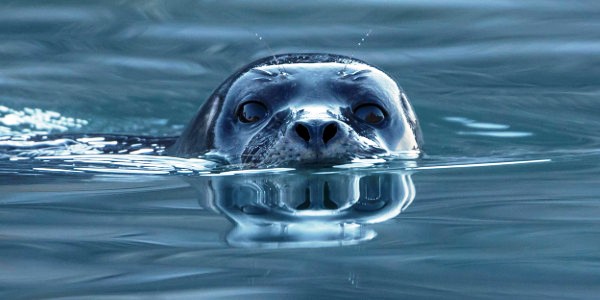Sealy
When we look out onto the little cove in front of our house, we often see a harbor seal. With its head poking out of the water it carves a little wake as it swims around our dock. We call “him” “Sealy.” Sealy is usually by himself, and we worry that he might be lonely. But occasionally he has a companion, which makes us happy. Sometimes Sealy follows our kayaks when we’re out paddling—he shows off by corkscrewing underneath the boat and coming up the other side, surfacing and staring at us with his liquid brown eyes, while gravely flicking his whiskers and softly snorting. But even from that close, Sealy always looks the same—like a seal. Suddenly, several years ago it occurred to me that maybe all the sightings weren’t of a single seal, but of a whole multitude of them—Sealys 1 through 20, say. How can you tell one seal from another, since they all look the same?
Between my third and last years of medical school, I went to Northern Thailand to do medical research. Back then there were very few westerners in that part of the country. After about six months I realized that on casual glance I could often tell whether a person I encountered in the hospital or the market was an ethnic Thai, from one of the various hill tribes, or an ethnic Chinese, who commonly lived in Thailand. Not by any special effort, but just automatically. Unexpected, however, was that as the Asians I was living among began to look quite distinct, I became unable to distinguish among the western tourists who occasionally came through our town. At the night market, where we often went for dinner, we’d sometimes hear English or German or French spoken at a nearby table. I’d look up, and see some white people–they all had the same pale, reddish skin, bulging eyes, and big noses. They all looked vaguely familiar: I kept thinking that I knew them, but wasn’t sure exactly who they were. It was unsettling. I was much more comfortable looking at the Thais at the other tables.
Occasionally, we’d travel to a remote village to follow up on a patient we’d cared for in our hospital. There was a lot of medical equipment to carry, and the paths up into the mountains were too narrow and twisty for any vehicle. So we’d bring along elephants to schlep the loads. Occasionally on the way up we’d encounter a Kariang hill tribe family on the way down; they would have to climb up the slope next to the path to make way for the elephant brigade. Then, after the elephants passed they would come back down, wave, and say the equivalent of “hi!” to the Thais in our group. But when they saw me, they’d start laughing and pointing and talking quickly to each other. Then a bold one, usually a child, would approach me and stroke my moustache or carefully trace the skin of my arm with their fingers. I don’t think it occurred to them to look me in the eye, or even to talk to me; they rightly figured there was no way I could understand them, or they me. I wasn’t an individual, but rather a random member of an exotic species—an undifferentiated white man. I was the human equivalent of Sealy. Though the Kariang examined and stroked me in good humor and completely without malice, it was still unsettling.
Having had a more attenuated but similar reaction to white people in the night market, I could understand the Kariang’s reaction much better than if I’d never had that experience. And I more deeply understand how easy it is to “other” groups of people we aren’t familiar with. “Sealy” is now simply “a seal.”



I love this, Ken! “Sealy” should stay this seal’s—or 1-20—name. May we also see each person as an individual—an important individual, even…